Best Connection Message Templates on LinkedIn
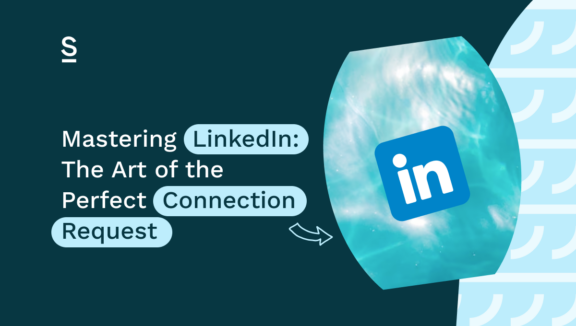
Not to state the obvious, but – sales is competitive. And every interaction counts. LinkedIn can be a huge source for harvesting your leads. But simply sending a connection request isn’t going to cut it in 2024. The key to unlocking LinkedIn’s potential lies in crafting the perfect connection message; one that resonates, engages, and paves the way for future interactions.
Why does this matter so much? Because first impressions are everything. In a sea of connection requests, a well-crafted, personalized message can make you stand out, show that you’ve done your homework, and demonstrate that you’re genuinely interested in connecting. Not just selling. Let’s dive into the essentials of creating effective LinkedIn connection requests and explore how you can elevate your approach to social selling.
Need to skip ahead? We’ll cover:
Writing a LinkedIn Connection Request that works
Why Personalization Matters
Personalization is the secret sauce of successful LinkedIn outreach. In sales, where relationships are built on trust and relevance, a personalized message shows that you’re not just sending out blanket requests. It signals that you’ve taken the time to understand who the recipient is and why connecting could be mutually beneficial.
Research supports this: personalized messages are far more likely to be accepted and lead to meaningful conversations. According to LinkedIn, personalized connection requests are 3.6 times more likely to be accepted than generic ones. For sales professionals, this means that personalization is not just a nice-to-have; it’s a must.
First Impressions Count
Your connection message is often the first interaction a potential client will have with you. It sets the tone for all future communications. A well-crafted message can establish a positive first impression, demonstrating that you’re professional, thoughtful, and genuinely interested in their needs—not just in making a sale.
A good message shows that you respect their time, understand their challenges, and have something valuable to offer. This approach is much more likely to open doors and create opportunities for meaningful conversations.
And the stats speak for themselves. LinkedIn data reveals that professionals who engage with personalized content and messages see a 45% higher likelihood of engaging in sales conversations. What’s more, response rates to personalized InMail are up to 25% higher compared to generic messages. Sounds like a time drain? Think again. Surfe’s personalized message templates for LinkedIn messages and InMail can save you hours of painstaking personalization to deliver sales outreach that really resonates with your prospects.
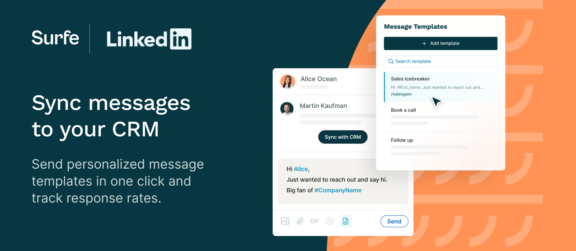
What Makes a Good Connection Request on LinkedIn?
Personalization
Personalization goes beyond just using someone’s name. It’s about showing that you’ve done your research. Take the time to review your prospect’s LinkedIn profile, understand their role, their company, and any recent activities or posts they’ve shared. Reference specific details that connect your message to their current situation or challenges.
For example, if they recently posted about a new project, you might mention how your product or service could support that initiative. This level of detail not only grabs their attention but also shows that you’re not just another salesperson—they see that you’ve taken the time to understand them.
Clarity and Brevity
When crafting your message, get to the point! LinkedIn users are busy professionals, so your message needs to be concise to get their attention. Focus on who you are, why you’re reaching out, and what you hope to achieve (without overwhelming them with information).
A clear, brief message respects their time and makes it easy for them to see the value in connecting with you. Think of it as an elevator pitch: you have just a few seconds to capture their interest, so make every word count.
Offering Value
Your connection message should clearly convey what’s in it for your prospect. Whether it’s insights into industry trends, solutions to their business challenges, or access to valuable resources, you need to demonstrate the value of connecting with you.
For instance, if your product can help them solve a specific problem, mention that. But avoid the hard sell—focus on how you can help, not on what you want from them. Offering value builds trust and positions you as a resource rather than just another salesperson.
Taking the Right Tone
Striking the right tone in your message is key. You want to come across as professional, but also approachable. Avoid overly formal language that can seem stiff or impersonal, and steer clear of overly casual language that might come off as unprofessional.
Aim for a tone that’s friendly, conversational, and respectful. You’re looking to build a relationship, so your message should reflect that you’re someone they would want to do business with.
Putting It Into Practice
Scenario 1: Reaching Out to a Potential Client
When reaching out to a potential client, your message should focus on identifying a problem you can help them solve, without directly pitching your product.
Example:
“Hi [Name], I came across your recent post about scaling your team’s digital efforts. As someone who’s passionate about helping companies enhance their online strategies, I’d love to connect and share some insights that could be beneficial for your growth plans.”
This message shows that you’ve done your homework and are offering something relevant to their current focus.
Scenario 2: Following Up After a Sales Call or Meeting
After a sales call or meeting, it’s important to follow up with a message that reinforces your value proposition and keeps the conversation going.
Example:
“Hi [Name], it was great discussing [Topic] with you earlier. I’ve been thinking about how [Your Product/Service] could help address [Specific Need] and would love to stay connected here on LinkedIn to explore further opportunities.”
This message keeps the momentum going while reaffirming your understanding of their needs.
Scenario 3: Engaging with Leads Who Show Interest in Your Content
If a prospect has engaged with your content, it’s a golden opportunity to reach out and start a conversation.
Example:
“Hello [Name], I noticed you recently liked our post on [Topic]. As someone with a strong interest in [Related Field], I think we could have a valuable exchange of ideas. I’d love to connect and discuss how we might both benefit from sharing insights.”
This message shows that you’re paying attention to their interests and are looking to build a mutually beneficial relationship.
Scenario 4: Reconnecting with Dormant Leads
When reconnecting with leads who have gone quiet, it’s important to remind them of your previous interactions and offer new value.
Example:
“Hi [Name], it’s been a while since we last connected. I wanted to share some new insights that could be relevant to [Company] and see how things have been on your end. Let’s reconnect and see how we can move forward.”
This message acknowledges the gap in communication while offering something new and valuable to re-engage them.
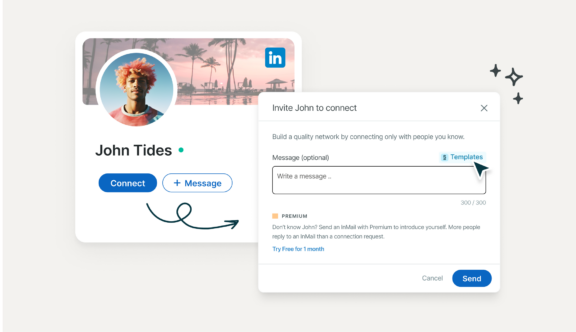
Common Mistakes to Avoid
Overly Generic Messages
Sending out generic, cookie-cutter messages is a surefire way to get ignored. These messages often come across as spammy and show that you haven’t taken the time to understand the recipient. In sales, your reputation is everything—don’t risk it with a generic approach.
Being Too Pushy or Salesy
Remember: LinkedIn is not a direct sales platform. First and foremost, it’s a professional social network. Being too pushy or coming on too strong with a sales pitch can turn potential clients off. Focus on building a relationship first. The sale will come naturally if you establish trust and demonstrate value.
Neglecting Follow-Ups
Don’t leave your prospects hanging. If you forget to follow-up after connecting, you miss the opportunity to move the relationship forward.
Best Practices for Follow-Up Messages
Expressing Gratitude
A simple “thank you” can go a long way. When someone accepts your connection request, thank them and reinforce the reason why you wanted to connect.
Example:
“Thank you for connecting, [Name]. I’m looking forward to learning more about your work at [Company] and exploring how we can collaborate.”
Suggesting Next Steps
Once you’ve established a connection, it’s important to keep the conversation going. Suggesting a next step, like a call or meeting, can help move the relationship forward.
Example:
“I’d love to schedule a quick call to discuss how we can support each other’s goals. Let me know what time works best for you.”
Keeping the Tone Light
Even in follow-up messages, it’s important to maintain a light, friendly tone. This helps keep the conversation natural and engaging.
Example:
“Looking forward to staying in touch, [Name]. Let’s keep the conversation going—there’s so much we can learn from each other!”
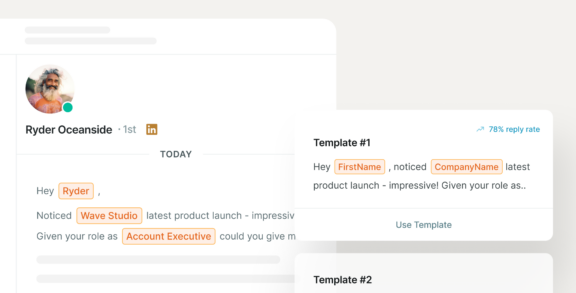
Let’s Wrap It Up!
The clue is in the name, sending a connection request on LinkedIn is just that: asking someone to connect with you. So, bear in mind how you want to nurture your relationships with your prospects before firing off a stock standard request en masse.
By focusing on personalization, clarity, value, and maintaining a professional yet approachable tone, you can significantly increase your chances of making meaningful connections that might lead to sales. Remember to avoid common pitfalls like being too generic or pushy, and always follow up to nurture your new relationships.
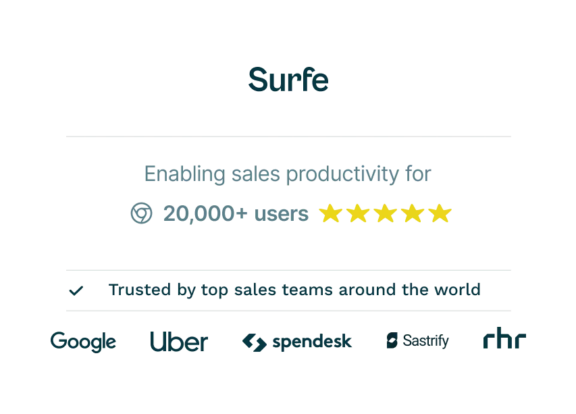
Making meaningful connections with a LinkedIn message is possible
Surfe’s personalized message templates help you create sales outreach that your prospects will actually respond to.
FAQs
How important is personalization in LinkedIn messages?
Personalization is crucial. It shows that you’ve taken the time to understand the recipient, which can significantly increase your chances of a successful connection.
What tools can I use to improve my LinkedIn connection requests?
Surfe’s personalized message templates for LinkedIn and InMail allow you to craft compelling sales messages that resonate with your prospects’ pain points.
What’s the best way to follow up after a connection is accepted?
Start with a thank you, reinforce the reason for connecting, and suggest a next step to keep the conversation moving forward.
How can I avoid coming across as too salesy in my messages?
Focus on building a relationship first. Offer value, share insights, and keep the tone conversational rather than immediately pushing for a sale.


